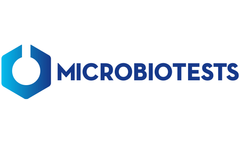Rotifer Articles & Analysis
8 articles found
In comparison with current test organismsB. plicatilisis either more equal or less sensitive depending on the compound, confirming the species-chemical specificity of mode of action of toxicants. The repeatability of the rotifer test is 5-6 times better than reported forDaphniatests and twice as good as theArtemianauplii bioassay. Like the standard brine shrimp nauplii acute ...
Variation among different endpoints has not been described and compared to variation in toxicant sensitivity among rotifer species. Data is presented demonstrating that endpoint chronic values for pentachlorophenol are log-normally distributed with a mean of 251 µg/l PCP and a coefficient of variation of 12%. This compares to the distribution of rotifer ...
We investigated the univariate effects of Ca, pH and DOC on chronic (48h) Pb toxicity to the freshwater rotifer Brachionus calyciflorus. High pH (8.2) and higher concentrations of DOC were protective against filtered Pb toxicity, whereas Ca was not. ...
Chlorpyrifos (CPF) is a widely used organophosphorus insecticide for controlling diverse insect pests of crops. In the monogonont rotifer Brachionus koreanus, population growth retardation with the inhibition of lifespan, fecundity, and individual body size of ovigerous females was shown over 10 d in response to CPF exposure. At the molecular and biochemical levels, the ...
The continuous input of these pollutants into freshwaters and their potential effects on aquatic life are of increasing concern. The rotifer Plationus patulus, a basal member of riverine food webs, was used to test acute and chronic toxicity of four PPCPs (acetamidophenol, caffeine, fluoxetine, triclosan). ...
HWAF exposure mainly had a negative impact on cladocerans which resulted in top‐down effects (between cladocerans and phytoplankton). Thiram negatively affected rotifers and copepods suggesting more direct toxic effects. Our results show that the use of secondary production as an endpoint provide a more comprehensive assessment of potential direct and indirect effects of ...
Therefore, the impact of predation by the rotifer Brachionus calyciflorus on tolerance of eight genetically different strains of the green alga Chlamydomonas reinhardtii to simultaneous exposure to each of the three herbicides (diuron, paraquat, and S‐metolachlor) was tested. ...
Planktonic communities in these lakes are mostly dominated by microorganisms, including bacteria and phototrophic and heterotrophic protists, and by metazooplankton, usually represented by rotifers and calanoid copepods, the latter mainly from the genus Boeckella. ...



